#japankakuchi
Explore tagged Tumblr posts
Text
Tokyo day trip: Kawagoe aka Koedo, “Little Edo”

Photo by 江戸村のとくぞう x
About an hour out of Tokyo is quaint, historical Kawagoe. I’ve only put this in one itinerary so far but it seems to be pretty straightforward if you aren’t trying to go to aaall the shrines.
It’s about an hour from the west side of the loop line/Yamanote line (Shinjuku/Shibuya area) and from there it’s pretty easy to get everywhere on foot.
First, stop by the warehouse district Kurazukuri no Machinami (蔵作りの町並み), where historical warehouses have been preserved as shops and cafes. You can visit the museum to see more of the history of the warehouse district.
Nearby is Kashiya Yokocho (菓子屋横丁), or Candy Lane, where you can try traditional Japanese candies and sweets! At Tamariki Seika, you can sometimes even watch them make the candies.
A prominent landmark near the warehouse district is the belltower, Toki no Kane (時の鐘), which still chimes four times a day.

Photo by Ocdp x
If you’re lucky enough to visit in October, go during the Kawagoe Festival (picture at the top of the post). Otherwise, you can view some of the parade floats at the Festival Museum.
If you’re into Starbucks, you’ll want to visit the one in Kawagoe—it’s housed in a traditionally-styled building, complete with a Japanese garden to enjoy with your latte.

X
For those of you who prefer beer, try to find a place where you can try Coedo beer, a local craft beer. Unfortunately I can’t find anything about a brewery tour, but many restaurants around should serve it, or you can take a short train ride to their Craft Beer 1000 Lab to try some experimental brews.
Speaking of restaurants, the area is known for imokoi (いも恋), a sweet filled with a potato (imo) filling. It’s also known for unagi, smoked eel, and chasoba (!!), noodles made with green tea.
There also happens to be a hot spring near Kawagoe, so swing by Chisana-tabi Kawagoe Onsen (小さな旅 川越温泉) for a dip.
22 notes
·
View notes
Text
Day trip from Hiroshima—Miyajima
Of course I recommend anyone with some time and a JR pass to swing by Hiroshima, but by itself there isn’t a lot of sightseeing. Miyajima is a scenic island an easy day trip from there.
You’ll spend probably about half a day at the Atomic Bomb Dome and the Peace Park. You can go there in the morning, then leave directly from the Peace Park on the direct ferry (2,200 yen) and stay overnight on Miyajima. Or you can take the JR train from Hiroshima station to Miyaguchi station and take a shorter ferry (the whole route is about 600 yen).
From there, walk to Itsukushima Shrine. During high tide, the torii gate here looks like it’s floating on the water.
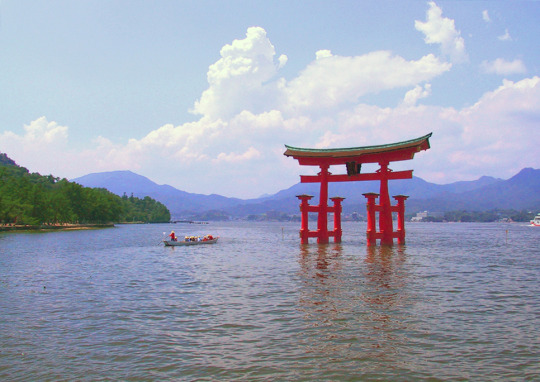
Photo by Rdsmith4 x
Daishoin Shrine is about 5 minutes walk from Itsukushima. It’s hidden in the trees and has some spectacular views from the top.
Next, walk (or take a free shuttle) to the ropeway for some more good views.
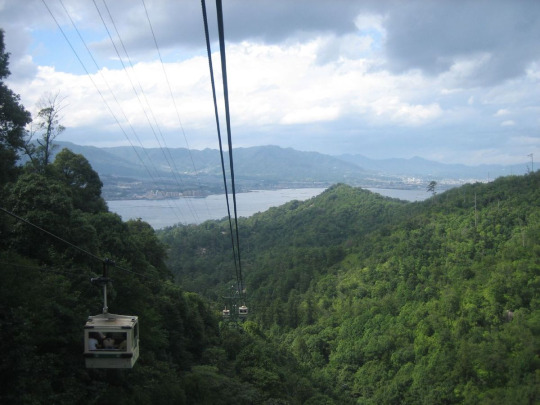
Photo by Clifford D x
When you come back down (you can hike down and visit some smaller shrines on the way if you’re active), walk towards Omotesando street for shopping, cafés, and restaurants. Miyajima’s local delicacy is momiji manju, sweets with filling shaped like maple leaves (momiji), so be sure to try some. The confectionary Okinadou is a popular place.
If you happen to be traveling with four of your friends, visit the Traditional Handicrafts Shop near Omotesando to try some hands-on workshops, including momiji mochi making and painting your own wooden rice spoon (advance reservations required, min 5 people--but it looks interesting).
Other than that, there’s a history museum with a Japanese Garden, Omoto park with maple trees for prime autumn leaves viewing, more viewing points from Mt. Misen, etc. etc. so be sure to look around for things that interest you or seasonal events and things to get the most out of your visit.
Oh, and if you didn’t get the chance to go by Nara, Miyajima also has a population of free-roaming deer!
15 notes
·
View notes
Text
Kishi station, Kinokawa (Wakayama)
Ever heard of Stationmaster Tama?

(Photo from the railway’s homepage)
In the early 2000’s, Wakayama Electric Railway (和歌山電鉄) was on the verge of closure when the stationmaster of Kishi station adopted Tama, a stray cat. Tama was appointed to station master in January in 2007 and ridership for the railway line increased enough to keep the railway from closing down in a phenomenon called “nekonomics” or “cat economics,” the idea that having a cat mascot will increase a company’s popularity. Tama passed away in 2015 of old age, but was later deified and has a shrine dedicated to her inside Kishi station, where her apprentice and successor Nitama (Tama 2) and Nitama’s apprentice Yontama (Tama 4) are currently employed. For those of you concerned about Santama (Tama 3). worry not—she was sent to Okayama for training and the public relations officer in charge of taking care of her refused to give her up.
You can visit Kishi station, meet Nitama (who greets passengers in a window during her office hours 10-4 Fri-Tue, Yontama works at Kishi Wed-Thu and Idakiso Sat, Sun, and Tue.), visit the café to buy Tama and Nitama merch and cute drinks, or buy omamori (protective charms sold at shrines) from the shrine shop. It’s an easy day trip from Osaka. From JR Tennoji or most stations on the loop line, take the Kishuuji kaisoku (express) going to Wakayama and the airport (be careful to get on the right car as the train decouples at Hineno station and the back half of the train goes to the airport). The trip to Wakayama station will take about 2 hours. Transfer at Wakayama to the Wakayama Electric Railway (Wakayama Dentetsu) Kishigawa Line, which is a direct transfer (don’t leave the JR gates first, head towards platform 9). The best option is to buy a day pass for all of the stops on the Kishigawa line for 800 yen (children 400).
While in Wakayama, you can go strawberry picking in the spring, visit an onsen, or try Wakayama-style ramen.
#japan#travel#japantravel#statiomaster tama#tama#tama super station master#nitama#yontama#wakayama#osaka#japankakuchi#cats#tama the stationmaster cat
24 notes
·
View notes
Text
Takedao abandoned railway hike, Fukuchiyama, Hyogo pref.

x
Very high on my personal list of places to go. The section of the Fukuchiyama line between Takedao and Namaze stations was built and then abandoned. It was known as a good hiking trail despite officially being closed to the public until recently, and it has some excellent views. It’s a several-hour-long hike but is supposed to be fairly easy.
24 notes
·
View notes
Text
Day trip/overnight from Tokyo: Hakone
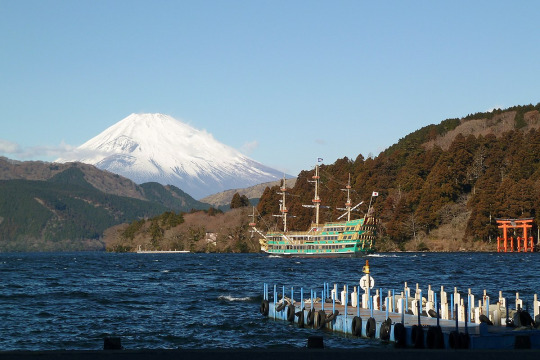
x
It’s been about a month since I started my job at the travel agency and I already know more about things to do in Hakone than anyone who’s never been to Hakone should know. It’s a small but popular town near Mt. Fuji with some pretty good things to do. If you’re going between Tokyo and Kyoto, this is a good stop on the way. It’s also a good opportunity to splurge a bit and stay at a nice ryokan with an onsen. There are even a few—but not many—open-air onsen with views of Fuji (many of those are at ryokan, but may be open to day guests not staying there overnight).
There’s lots of stuff to do here so I’ll try to keep it short. Anyone wanting a more detailed description (especially prices and logistics on getting from place to place), feel free to send an ask!
Getting there from Tokyo:
The shinkansen is only 40 minutes from Tokyo Station to Odawara and for such a short distance is not too expensive (3,000 for unreserved, 4,500 yen for balls-to-the-wall luxury with seats in the premium car). Take the Tozan train from Odawara to get into Hakone proper--a particularly gorgeous ride during hydrangea season (mid-June to late July).
The Odakyu Romancecar (limited express) from Shinjuku to Hakone Yumoto is a bit longer (80 minutes). It’s a bit cheaper than the shinkansen (in the range of 2,500 yen), but they’re close enough that it’s better to just decide based on convenience--unless you have the Freepass, in which case the Romancecar is only about 1,500 yen.
If you’re staying overnight or for 2 nights you should absolutely get the Hakone Freepass (2- and 3-day passes available) which give you free public transport basically anywhere in Hakone, and discounts for a bunch of stuff.
Suggested route:
Train from Hakone Yumoto or Odawara to The Hakone Open-Air Museum: art museum with some pretty notable exhibits (admission 1,600 yen)
Walk (15 min) to Sounzan station and ride the Hakone Ropeway to Togendai station (¥1,480 one-way): some good views going up the mountain. Easily accessible from Odawara and Hakone Yumoto via bus and cable car (all free with the Freepass). Stop at Owakudani station (¥920 +¥1,140 from there to Togendai) on the way up to try the famous black eggs—eggs boiled in a sulfur spring with the shells turned black, which are said to add 7 years to your life:
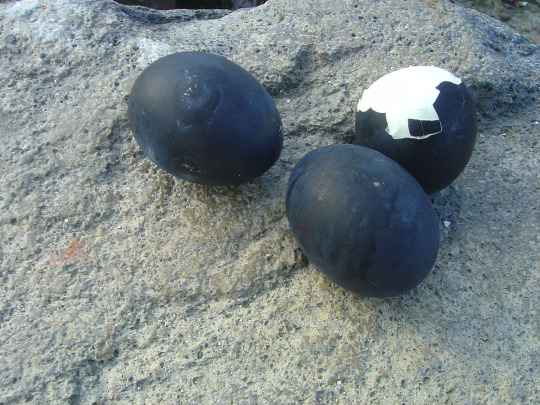
Photo by David Monniaux x
From the top of the ropeway (Togendai station) take the Hakone Sightseeing Cruise on Lake Ashi/Ashinoko to Motohakone port for Hakone Shrine or Hakonemachi for Hakone Sekisho (the two ports are within walking distance of each other so you can visit both--¥1,040 one way, free with Freepass, cruise/ropeway day pass also available). On clear days you can see Mt. Fuji, such as in the picture at the top of this post.
Hakone shrine: some gorgeous views, of course. One of the torii gates is on the lake.
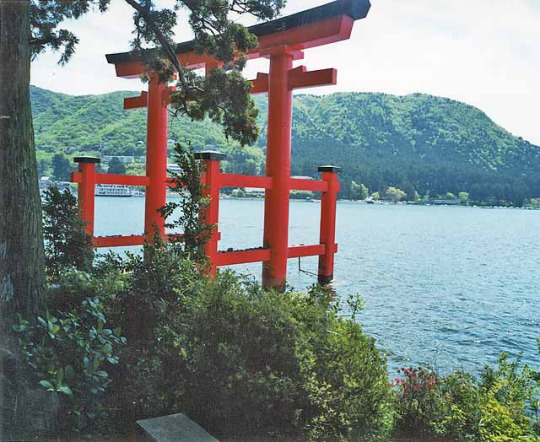
x
Hakone Sekisho (Hakone inspection point): historically used to prevent weapons from coming into the city and the wives and daughters of feudal lords from getting out of the city. Now restored as a museum.
Then take a bus back to Hakone Yumoto/Odawara/your hotel, etc.
If the Hakone Ropeway is closed, you can try the Komagatake ropeway instead (go to Hakone Shrine or Hakone Sekisho by public transport first, then take the Izuhakone cruise instead of the Hakone Sightseeing Cruise to Hakone-en port; alternatively, just take a bus to Hakone-en. There’s fewer Freepass discounts with this route).
That’s a pretty good day trip right there, but if you’re staying longer try some of these:
Yunessun onsen complex: One side of the complex is a bit more traditional, while the other (swimsuits required) has rooms with coffee baths and wine baths, just to name a few (3,500 yen for admission to both parts).
And the Venetian Glass Museum.
If you’re going by shinkansen, take some time in Odawara to go to Suzuhiro Kamaboko Village. Kamaboko is a traditional Japanese food made from pureed fish paste, formed into loaves and steamed. At Suzuhiro, you can try making your own kamaboko at the museum (1,500 yen depending on the workshop. I recommend going through the Japanese version of the website if you’re able to do the workshop in Japanese, as there are more options). There are some other food-related places at the village, like a soba restaurant and a craft beer brewery.
Also in Odawara is Odawara Castle, where you can try on some armor!
10 notes
·
View notes
Text
Nara city
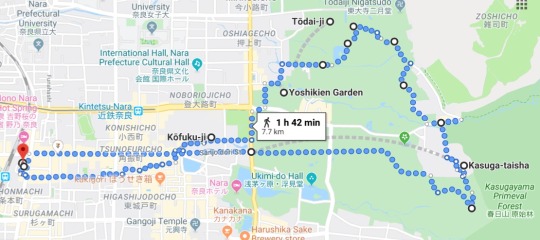
You might have heard about Nara since it’s famous for the deer wandering through the city. It’s a small enough place that I personally suggest people to make it a day trip from Osaka or Kyoto by train rather than bringing along your luggage to stay the night. I recommend at least going to Todaiji to see the Great Buddha statue (admission is a couple hundred yen) and visiting the deer in and around Nara park, although no matter where you go in the area you’ll come across them anyway. There’s a pretty good route that takes you through most of the main famous spots in Nara that I usually take with visiting family and friends, starting at Nara station and going along the Sanjo Dori shopping street, through Kofukuji temple, Yoshikien or Isuien Japanese gardens (they’re right next to each other—if I recall, admission is free for foreigners in both gardens), Nara Park, Todaiji, and Kasuga Taisha shrine. Depending on your interests you can add a few museums in and around Nara park, some other smaller temples and shrines, or visit the primeval forest behind Kasuga Taisha. Be aware that it is a long day of walking, but there are lots of small restaurants and cafes to take a rest and get something to eat. You can buy some senbei crackers for the deer, but they will bite at your pockets and bags if they think you have some stored away.
14 notes
·
View notes
Text
Announcement!
I have accepted a job offer at a travel agency and in order to prepare for planning tours, I’m going to start posting about sightseeing spots, historical landmarks, local foods, and other notable information about various areas of Japan that I’ve been hearing about from my eikaiwa students this year. I’ll tag these posts “japankakuchi” so those of you who are only interested in language stuff can blacklist them if you want. I’ll intersperse them with regular languages posts.
I’m also interested in hearing any feedback! I’ve been getting an unexpected number of followers so I’m interested in hearing what you guys think!
#japan#japanese#languages#langblr#japantravel#travel#japankakuchi#another reason to like working at the multimedia center#online lessons!
14 notes
·
View notes
Text
Wisteria tunnel at Kawachi-Fujien 河内藤園, Kitakyushu

x
Kawachi-Fujien (Kawachi wisteria garden) has two wisteria tunnels as well as many other large wisteria trees. Blooming season for wisteria is late April-early May, and you will have to buy a ticket in advance (500-1500 yen) to visit during this time. Golden Week is also in early May, an especially busy time for traveling in Japan, so prices for traveling and lodging may be especially high.
13 notes
·
View notes
Text
Joumon-sugi (縄文杉)

x
Joumon-sugi (縄文杉), Yakushima (屋久島), Kagoshima pref.—UNESCO world heritage site
Yakushima is home to the forests that inspired Princess Mononoke, as well as Joumon-sugi, estimated to be the oldest tree of its type at somewhere between 2,000 and 7,000 years old. To get to Yakushima, you can take a ferry or fly. Getting to Joumon-sugi from there requires a one-way 3-4 hour hike on the Arakawa trail, so it’s definitely at least a day-long trip.
Yakushima is off the beaten path for out-of-country visitors, so there isn’t as much English as in other areas, but there are signs in English. It’s a pretty popular destination for Japanese tourists, so there’s a variety of lodging and food, as well as a variety of guided tours.
7 notes
·
View notes
Note
As someone who has been to Sendai several times, I can recommend it! It is a big city but not too crowded, there aren't too many tourists. and the people are friendly. You can visit the Aoba Castle, learn a lot about Date Masamune (one of feudal Japan's most powerful lords and the founder of Sendai), shop in the Ichibancho Arcade, eat gyuutan (a must!), and if you have time, you should definitely visit Matsushima! Zao is also quite near and worth visiting. :)
For the earlier anon!
3 notes
·
View notes